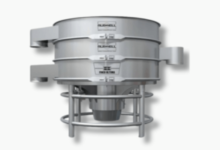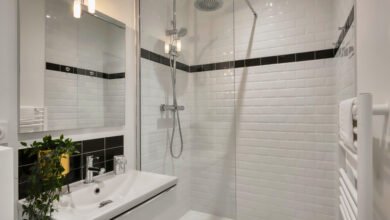Modern Cleaning Solutions for Diverse Home Needs

Key Features in Contemporary Cleaning Tools
Modern cleaning devices prioritize efficiency and adaptability. Advanced filtration systems capture microscopic particles. Multi-surface compatibility addresses varied flooring types. Ergonomic designs reduce physical strain during extended use.
Real-time monitoring systems optimize performance based on debris levels. Automatic height adjustments adapt to carpet thickness. These innovations enable thorough cleaning across different environments.
Upright Models for Multi-Surface Cleaning
Upright units remain popular for carpeted areas. Swivel steering enhances maneuverability around furniture. Detachable handheld components simplify above-floor cleaning. HEPA filtration traps allergens effectively.
Weight distribution impacts user comfort during operation. Some models exceed 15 pounds, requiring careful consideration for multi-level homes. Cord length determines cleaning radius in larger spaces.
See also: Garden Construction: Crafting Your Dream Outdoor Space
Cordless Stick Units for Flexible Use
Battery-powered models offer unrestricted movement. Runtime varies from 35 to 100 minutes between charges. Brushless motors maintain suction consistency throughout sessions. Convertible designs function as handheld units for spot cleaning.
Dust cup capacity affects interruption frequency during cleaning. Self-emptying bases reduce maintenance requirements. Laser-assisted debris detection improves hard floor cleaning precision.
Specialized Solutions for Pet Owners
Tangle-free brush systems prevent hair accumulation. Odor-neutralizing filters combat pet-related smells. Separate cleaning modes protect hardwood from abrasive bristles. Motorized tools target embedded fur in upholstery.
Allergen containment systems benefit sensitive households. Washable components simplify post-cleaning maintenance. Dedicated pet hair channels in dust cups prevent clogging.
Robotic Units for Automated Maintenance
Mapping technology ensures systematic coverage. Virtual boundaries protect delicate areas through app controls. Self-charging capabilities enable complete floor plans. Dual-action brushes handle both fine dust and larger debris.
Mopping attachments require regular water tank refills. Obstacle detection systems vary in effectiveness across price points. Scheduled cleaning maintains consistent cleanliness between deep cleans.
Wet-Dry Systems for Comprehensive Cleaning
Combination units address liquid spills and solid debris. Separate tanks prevent cross-contamination during operation. Motorized scrubbing removes ground-in stains. Rapid drying mechanisms inhibit bacterial growth.
Maintenance requirements increase with dual functionality. Tank capacities determine cleaning session duration. Edge-cleaning designs improve corner performance. Some models integrate steam functions for sanitization.
Canister Models for Detailed Cleaning
Lightweight bodies simplify stair cleaning tasks. Specialized floor heads protect delicate surfaces. Retractable cords reduce storage space requirements. Transparent dust containers enable fill-level monitoring.
Hose length impacts reach under furniture. Accessory storage solutions vary between models. Filtration efficiency remains crucial for allergy sufferers. Maneuverability depends on wheel design and weight distribution.
Maintenance Considerations for Longevity
Filter replacement schedules impact air quality. Brush roll cleaning prevents performance degradation. Belt inspections maintain optimal agitation power. Emptying frequency affects motor lifespan.
Proper storage prevents component warping. Manufacturer guidelines ensure warranty compliance. Professional servicing resolves complex mechanical issues. Regular maintenance preserves suction efficiency.
Emerging Technologies in Home Cleaning
AI-powered suction adjustment optimizes energy use. Smart connectivity enables voice command integration. Particle sensors provide cleaning effectiveness feedback. Modular designs allow customized tool combinations.
Self-cleaning brush systems reduce manual intervention. UV sterilization attachments target microbial contamination. These innovations redefine user expectations for home maintenance.
Selecting Appropriate Tools for Floor Types
Low-pile carpets benefit from standard brush rolls. Thick carpets require motorized height adjustment. Hardwood surfaces need soft bristle protection. Mixed flooring homes demand versatile cleaning modes.
Area rugs necessitate adjustable suction settings. Tile grout lines require concentrated airflow. The vacuum cleaner with adaptive cleaning modes addresses multiple surface challenges effectively.
Energy Efficiency and Environmental Impact
Rechargeable batteries reduce disposable waste. Washable filters decrease replacement frequency. Energy Star certification identifies efficient models. Repair-friendly designs extend product lifespan.
Recycling programs for old units promote sustainability. Low-noise operation benefits shared living spaces. These factors contribute to eco-conscious purchasing decisions.
User Safety Features in Modern Designs
Overheat protection prevents motor damage. Automatic shutoff safeguards against electrical issues. Non-slip handles improve grip security. Child lock functions prevent accidental activation.
Sealed systems contain allergens during disposal. Rounded edges minimize collision damage. These safety enhancements protect both users and home environments.
Cost-Effective Cleaning Strategies
Refurbished models offer budget-friendly alternatives. Multi-purpose tools reduce accessory expenses. Proper maintenance lowers long-term ownership costs. Energy-efficient models decrease electricity consumption.
Warranty comparisons inform purchase decisions. Modular repairs prove cheaper than full replacements. These approaches maximize value across product lifecycles.
Future Directions in Cleaning Technology
Water recycling systems may reduce resource consumption. Advanced sensors could predict maintenance needs. Solar charging options might extend cordless runtime. Self-learning algorithms could optimize cleaning patterns.
Biodegradable components may address environmental concerns. These potential developments indicate ongoing industry evolution.





